Services
QUICK LOOK
On-site Support
VTS onsite support technician typically travels to the customer’s location, assesses the issue, and takes the necessary steps to resolve it. This can include installing software, replacing hardware components, or providing hands-on training to the customer. The goal of onsite support is to minimize downtime and ensure that the customer’s equipment or systems are back up and running as soon as possible.
Resident Engineers
Our Resident Engineers (REs) are technical experts who are deployed on-site at a customer’s location to provide ongoing support and maintenance for complex systems and equipment. They are responsible for ensuring that the systems are operating effectively and efficiently and for providing expert guidance and assistance to the customer.
Remote Support Team
A remote support team is a group of technical specialists who provide support and assistance to customers from a remote location, rather than on-site. Remote support is typically provided through phone, email, chat, or remote control software that allows the support technician to access the customer’s system remotely.
Design & Engineering
OUR design and engineering teaming service includes lighting control, access control, security, audio/visual, fire alarm, and data communication systems. ELV design and engineering require a thorough understanding of electrical and electronic systems, as well as a knowledge of relevant building codes and regulatory standards.

Design and estimation services
VERNIER Design and estimation services for Extra Low Voltage (ELV) systems refer to the process of designing and calculating the cost of ELV systems for a building or facility. ELV systems are low voltage electrical systems that are used to control and manage various functions within a building, such as lighting, security, audio-visual systems, and other building services. Design and estimation services for ELV systems typically involve a team of professionals who work to understand the specific requirements and needs of a building or facility. This includes evaluating the existing electrical infrastructure, assessing the required functionality of the ELV systems, and developing a detailed design plan. Once the design plan has been developed, the team will then use the information to create a cost estimate for the ELV systems. This includes calculating the cost of materials, labor, and any other expenses associated with the installation and commissioning of the ELV systems. The main benefits of ELV design and estimation services include a clear understanding of the costs associated with the ELV systems, improved building functionality, and enhanced building performance. By engaging professional design and estimation services, building owners and operators can ensure that the ELV systems are designed and installed to meet their specific needs, while also controlling costs and ensuring optimal building performance.
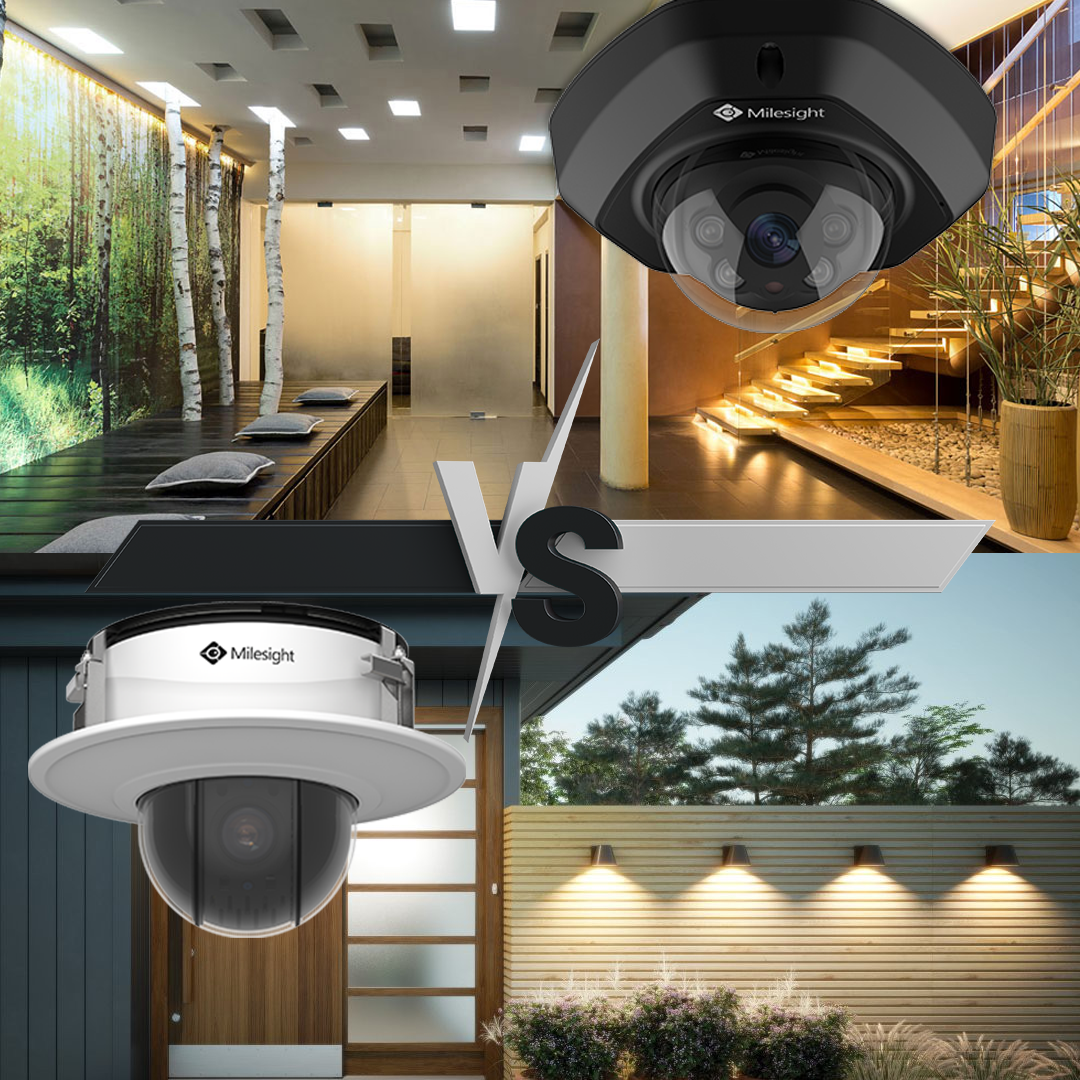
Security Camera
Security cameras can be either fixed or portable, and can range in size from small, discreet devices to large, high-definition cameras. They can be configured to send alerts or notifications in real-time, and can also be integrated with other security systems, such as burglar alarms, access control systems, and lighting systems. The main benefits of security cameras include increased security and safety, the ability to monitor and deter crime, and the ability to gather evidence in the event of a security breach. They can also provide peace of mind, knowing that your home or business is being monitored at all times. SIRA Approvals are approvals issued by the Security Industry Regulatory Agency (SIRA) in Dubai, United Arab Emirates. SIRA is the government body responsible for regulating the security industry in Dubai, and SIRA Approvals are a requirement for companies that provide security services or products in the city.

Intercom Systems
Intercom systems are communication systems used to allow communication between different areas or rooms within a building. They can be used in a variety of settings, including homes, offices, schools, and other public or private facilities. Intercom systems typically consist of a central control unit and multiple handsets or speakers, allowing communication between different areas or rooms. Some intercom systems also include video capabilities, allowing users to see who is speaking. Intercom systems can be either wired or wireless, and can be configured to allow two-way or multi-way communication. They can also be integrated with other security systems, such as door locks and access control systems, to provide added security and convenience. The main benefits of intercom systems include increased convenience, improved communication, and enhanced security. They can be used for a variety of purposes, including making announcements, allowing communication between rooms or areas, and controlling access to a building or area. Intercom systems can also be integrated with other communication systems, such as telephones or public address systems, to provide a complete communication solution.

Raised / Access Flooring Systems
VERNIER TECHNICAL SERVICES LLC Having special team for HIGH TECH DATA CENTER RAISED/ACCESS FLOORING SOLUTIONS Computer rooms and data center floor use raised flooring system composed of panels supported on steel pedestals to deliver cold air to servers through the sub-floor or plenum where air conditioning is channelled, as well as all installations, wires and other components. The primary benefit of Gamaflor elevated floor, from a cooling stand point, is to deliver cold air where it is needed, with very little effort, by simply swapping a solid tile for a perforated panel. Arranging the GAMAFLOR perforated ventilation floor panels in rows form a “cold aisle” that reduces significantly the energy power required by cooling systems in order to maintain adequate room temperature, thus achieving energy efficiency. The correct uniformity in the air supply for the cooling of the machinery is achieved through airflow regulators attached below the raised access floor perforated panels that can be regulated in the opening from 0 to 100%, thus achieving an equitable distribution in all cold aisles. Galvanized Tube Manufacturer Glass Mosaic Wholesale Office Raised Floor Solution Raised Access Floor System Guide Raised Floor Projects Server Room Raised Floor Solution Vinyl Flooring Guide
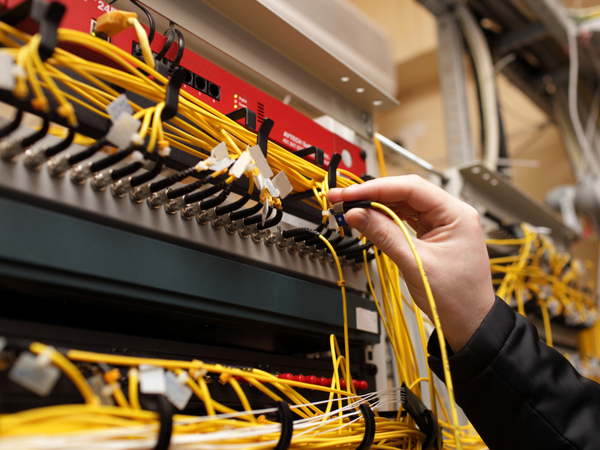
Optical Fiber Cabling Systems
Optical fiber cabling systems are communication systems that use optical fibers to transmit data and voice signals. Optical fibers are thin glass or plastic strands that transmit light signals over long distances, making them ideal for high-speed data transmission. Optical fiber cabling systems typically consist of optical fibers, optical transmitters, optical receivers, and other components that are integrated to form a complete communication system. These systems can be used for a variety of applications, including telecommunications, data centers, and other high-speed networking applications. The main benefits of optical fiber cabling systems include high speed, reliability, and security. They can transmit data at much higher speeds than traditional copper-based cabling systems, and are much less susceptible to interference or signal degradation. Optical fiber cabling systems are also more secure, as the optical signals are not susceptible to eavesdropping or interference, making them ideal for sensitive or confidential communications. Whether you're looking to upgrade your existing communication systems or build a new network from scratch, optical fiber cabling systems can provide the high-speed, reliable, and secure solution you need. With the ability to transmit data over long distances and the added security benefits, optical fiber cabling systems are an essential component of any modern communication network.
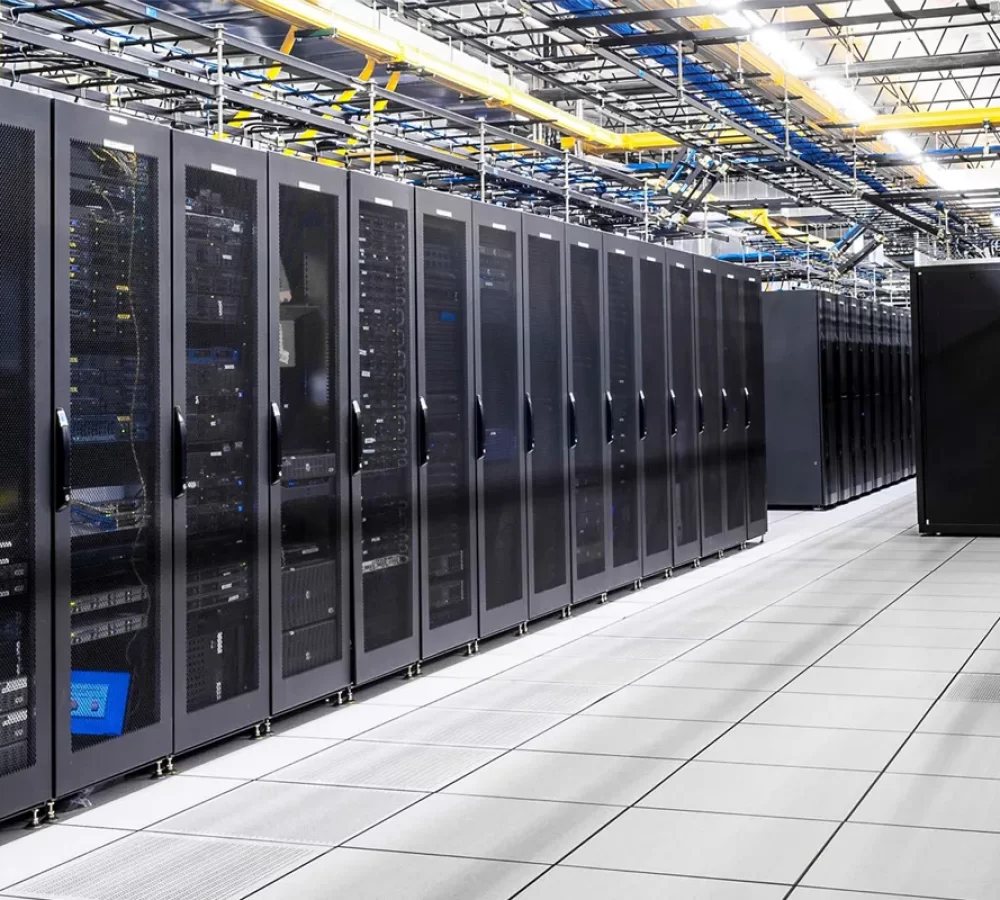
TIER IV Data Centre Design & Built
Our Qulaified and Experience TIER IV DATA CENER experts design, implement and manage the highest level of infrastructure availability and uptime, with multiple levels of redundancy built into all systems. This includes backup power supplies, cooling systems, and data communication connections, to ensure that operations continue without interruption even in the event of an equipment failure. These data centers are typically used by mission-critical organizations that require constant availability for their IT systems, such as banks, hospitals, and government agencies. We are design and implement latest tredn high level of redundancy with strict security measures to protect against physical and cyber threats. This includes secure access controls, video surveillance, and fire suppression systems. Our special team to meet the needs of organizations with demanding uptime requirements and who cannot afford any downtime for their IT systems. The uptime guarantee for a Tier IV data center is typically 99.995%, meaning that there is an expected downtime of no more than 26.3 minutes per year. When you are choosing a data center, it's important to consider your organization's specific needs and requirements, as well as the level of risk you're willing to accept. A Tier IV data center may be overkill for some organizations, but for others it's essential for ensuring the continuity of their business operations.
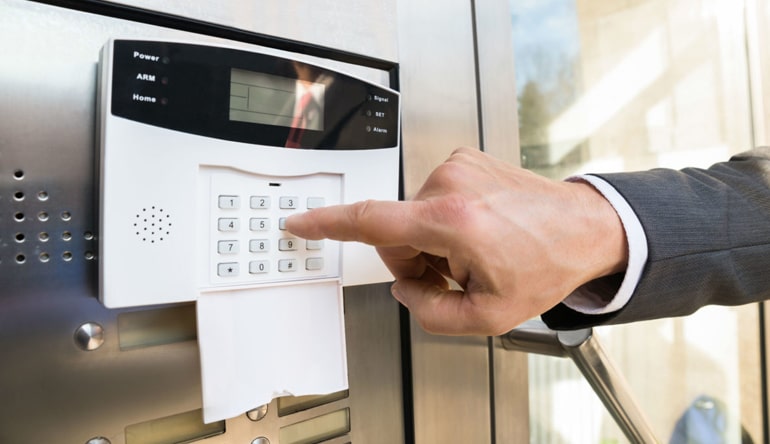
Alarm Systems
Burglar alarm systems are security systems designed to protect homes and businesses from unauthorized entry. They typically include a control panel, door and window sensors, and motion detectors that are connected to a central monitoring station. In the event of a break-in, the alarm system will trigger an alarm and alert the monitoring station, which can then contact the police or other emergency services. There are two main types of burglar alarm systems: wired and wireless. Wired systems are connected to the control panel through physical wiring, while wireless systems use radio signals to communicate between the sensors and the control panel. Both types of systems have their own advantages and disadvantages. Burglar alarm systems can be customized to meet the specific needs of a home or business. For example, some systems can be programmed to send alerts to a homeowner's smartphone when the alarm is triggered, while others can be integrated with smart home devices such as lights and thermostats. The main benefits of burglar alarm systems include increased security, peace of mind, and the potential for insurance discounts. In addition, a visible burglar alarm system can act as a deterrent to potential intruders.
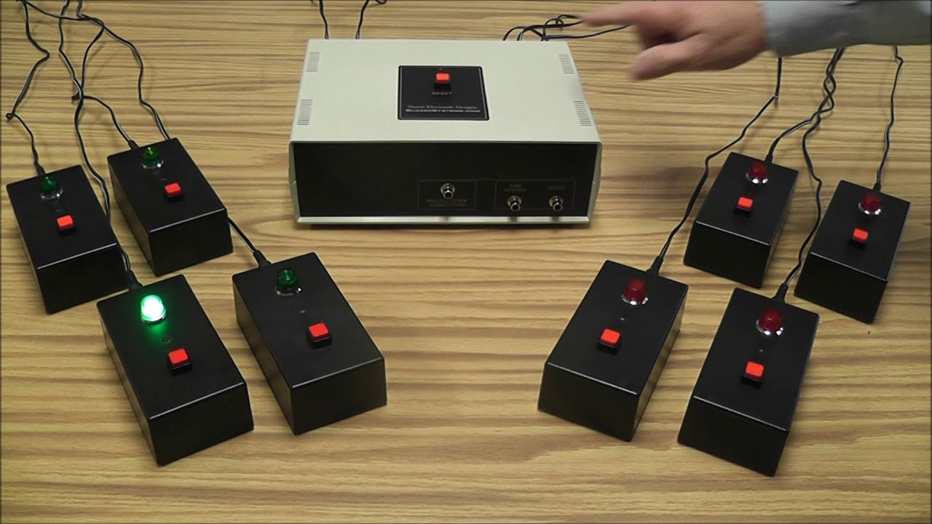
Buzzer
Buzzers, also known as electric bells or annunciators, are signaling devices that produce a buzzing sound. They are commonly used to alert people to incoming calls, doorbells, or other events. Buzzers can be either electromechanical or electronic. Electromechanical buzzers have a simple mechanical construction, with a spring-loaded arm that strikes a metal diaphragm to produce the buzzing sound. Electronic buzzers use an electronic circuit and speaker to produce the sound. Buzzers are widely used in various applications, such as in home security systems, doorbells, and industrial alarms. They are often used in combination with other signaling devices, such as lights or flashing LEDs, to provide a more visible signal. The main advantage of buzzers is their simplicity and low cost. They are easy to install and do not require a lot of electrical power to operate. They can also be connected to a variety of control devices, such as microcontrollers, to provide a flexible and customizable signaling solution. Security cameras are devices used to capture and record video footage for the purpose of security and surveillance. They can be found in homes, businesses, public spaces, and other locations to deter crime and provide evidence in the event of a security breach. There are several types of security cameras, including analog, digital, and IP cameras. Analog cameras use traditional coaxial cable to transmit video signals, while digital cameras use digital technology to transmit and store video. IP cameras use the Internet Protocol (IP) to transmit and store video, allowing for remote viewing and management of the cameras.

Building Management Systems
Building Management Systems (BMS) are computer-based systems that control and monitor a building's heating, ventilation, air conditioning (HVAC), lighting, and other systems. BMSs provide building owners and operators with real-time data and control over various building systems, enabling them to optimize energy efficiency, improve indoor air quality, and manage overall building performance. BMSs typically consist of a central control unit, sensors, actuators, and other components that are integrated with a building's existing systems. The central control unit can be programmed to automate certain functions, such as adjusting lighting or HVAC systems based on occupancy or temperature, or to provide alerts when maintenance is needed. BMSs can be configured to interface with a variety of systems, including HVAC, lighting, fire alarms, and security systems. They can also be connected to a building's energy management system, enabling building owners and operators to monitor and control energy usage in real-time. The main benefits of BMSs include improved energy efficiency, increased comfort and indoor air quality, and better overall building performance. They also provide building owners and operators with valuable data and insights, enabling them to make informed decisions about building operations and maintenance. With a BMS, building owners and operators can take a proactive approach to building management, maximizing building performance and minimizing the risk of system failures or breakdowns.

Lighting Control Systems
Lighting control systems are electrical systems that enable the control and management of lighting in a building or facility. They can range from simple on/off switches to complex systems that can control multiple lighting zones and scenes, dimming levels, and other functions. Lighting control systems typically consist of a central control unit, switches, dimmers, sensors, and other components that are integrated with a building's lighting fixtures. The central control unit can be programmed to automate certain functions, such as adjusting lighting based on occupancy, time of day, or ambient light levels. Lighting control systems can also be integrated with other building systems, such as heating, ventilation, and air conditioning (HVAC) systems, or building management systems (BMS), to provide a comprehensive building control solution. The main benefits of lighting control systems include increased energy efficiency, improved comfort and indoor air quality, and better overall building performance. By automating lighting and providing greater control over lighting levels, lighting control systems can help reduce energy consumption and costs, while also enhancing the overall lighting experience in a building or facility. Whether you're looking to upgrade a single room or your entire building, a lighting control system can help provide the solutions you need to improve building performance and energy efficiency.
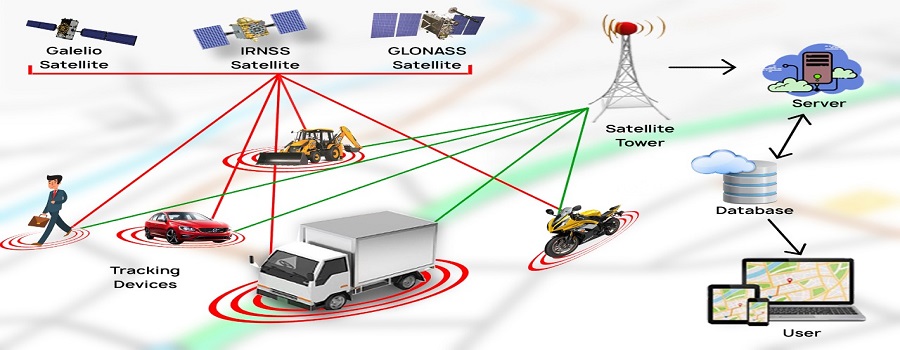
GPS- Vehicle tracking systems
GPS-based vehicle tracking systems use Global Positioning System (GPS) technology to track the location of vehicles. The system typically consists of GPS devices installed in each vehicle and a central server that receives and processes the GPS data. This data is then displayed on a map, allowing fleet managers to track the real-time location, speed, and direction of their vehicles. The information can also be used for route optimization, improved dispatch, and increased efficiency and safety of fleet operations.

WiFi Systems
Wi-Fi system installation involves the process of setting up a wireless network for a customer's premises. The goal of the installation is to provide the customer with reliable and high-speed wireless connectivity for their devices, such as laptops, smartphones, and tablets. The success of a Wi-Fi system installation depends on the experience and expertise of the installation team, the quality of the equipment used, and the customer's requirements and expectations. A well-designed and installed Wi-Fi system can provide reliable and high-speed wireless connectivity, improve productivity, and enhance the customer's overall experience.

Guest Room Management Systems
VTS GRMS is designed to control and manage various aspects of the guest room, including lighting, temperature, curtains/blinds, entertainment systems, and other amenities. Room automation: GRMS allows guests to control various room functions through a central control panel or a mobile application. This includes adjusting the temperature, controlling the lights, opening and closing curtains, and controlling entertainment devices. Energy management: GRMS helps hotels optimize energy usage by automatically adjusting temperature and lighting based on occupancy and guest preferences. Integration with other systems: GRMS can be integrated with other hotel systems like the property management system (PMS). GRMS enhances the overall guest experience by providing easy-to-use interfaces and personalized settings. Guests can customize their room environment according to their preferences, creating a more comfortable and convenient stay.
Join Us
SIRA Approved CCTV
SIRA Approvals are designed to ensure that all security companies operating in Dubai meet the high standards set by the agency. The approvals cover a wide range of security services and products, including security systems, alarm systems, access control systems, security cameras, and others.